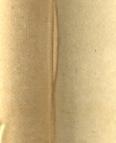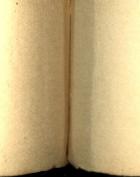230 DOGS AND ALL ABOUT THEM
Statistics would probably show that in numbers the Foxterrier justifies the reputation of being a more popular breed, and the Scottish Terrier is no doubt a formidable competitor for public esteem. It is safe, however, to say that the Irish Terrier shares with these the distinction of being one of the three most popular terriers in the British Isles.
This fact taken into consideration, it is interesting to reflect that thirty years ago the " Dare-Devil " was virtually unknown in England. Idstone, in his book on dogs, published in 1872 did not give a word of mention to the breed, and dog shows had been instituted sixteen years before a class was opened for the Irish Terrier. The dog existed, of course, in its native land. It may indeed be almost truthfully said to have existed " as long as that country has been an island."
About the year 1875, experts were in dispute over the Irish Terrier, and many averred that his rough coat and length of hair on forehead and muzzle were indubitable proof of Scotch blood. His very expression, they said, was Scotch. But the argument was quelled by more knowing disputants on the other side, who claimed that Ireland had never been without her terrier, and that she owed no manner of indebtedness to Scotland for a dog whose every hair was essentially Irish.
In the same year at a show held in Belfast a goodly number of the breed were brought together, notable among them being Mr. D. O'Connell's Slasher, a very good-looking wirecoated working terrier, who is said to have excelled as a field and water dog. Slasher was lint white in colour, and reputed to be descended from a pure white strain. Two other terriers of the time were Mr. Morton's Fly (the first Irish Terrier to gain a championship) and Mr. George Jamison's Sport.
The prominent Irish Terriers of the 'seventies varied considerably in type. Stinger, who won the first prize at Lisburn
in 1875, was long-backed and short-legged, with a " dark blue grizzle coloured back, tan legs, and white turned-out feet." The dam of Mr. Burke's Killeney Boy was a rough black and tan, a combination of colours which was believed to
THE IRISH TERRIER 231
accompany the best class of coats. Brindles were not uncommon. Some were tall on the leg, some short ; some were lanky and others cobby ; many were very small. There were classes given at a Dublin show in 1874 for Irish Terriers under 9 lb. weight.
Jamison's Sport is an important dog historically, for various reasons. He was undoubtedly more akin to our present type than any other Irish Terrier of his time of which there is record. His dark ears were uncropped at a period when cropping was general ; his weight approximated to our modern average. He was an all coloured red, and his legs were of a length that would not now be seriously objected to. But in his day he was not accepted as typical, and he was not particularly successful in the show ring. The distinguished terrier of his era was Burke's Killeney Boy, to whom, and to Mr. W. Graham's bitch Erin, with whom he was mated, nearly all the pedigrees of the best Irish Terriers of to-day date back. Erin was said to be superior in all respects to any of her breed previous to 188o. In her first litter by Killeney Boy were Play Boy, Pretty Lass, Poppy, Gerald, Pagan II., and Peggy, every one of whom became famous. More than one of these showed the black markings of their granddam, and their progeny for several generations were apt to throw back to the black-and-tan, grey, or brindle colouring. Play Boy and Poppy were the best of Erin's first litter. The dog's beautiful ears, which were left as Nature made them, were transmitted to his son Bogie Rattler, who was sire of Bachelor and Benedict, the latter the most successful stud dog of his time. Poppy had a rich red coat, and this colour recurred with fair regularity in her descendants. Red, which had not at first been greatly appreciated, came gradually to be the accepted colour of an Irish Terrier's jacket. Occasionally it tended towards flaxen ; occasionally to a deep rich auburn ; but the black and brindle were so rigidly bred out that by the year 18go, or thereabout, they very seldom recurred. Nowadays it is not often that any other colour
I



